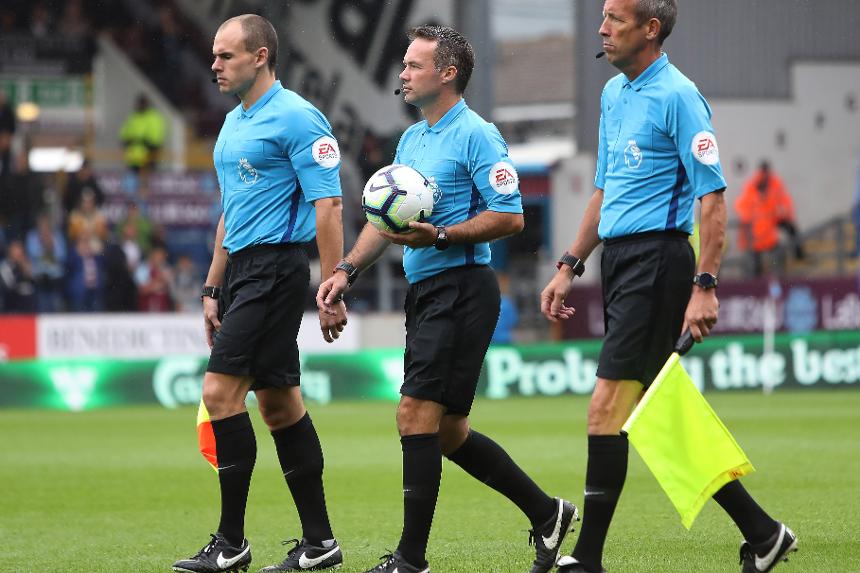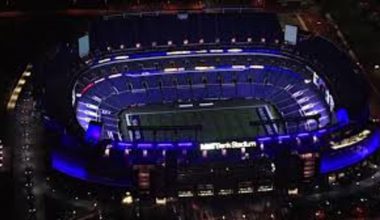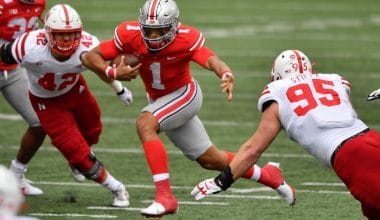Have you had the saying, Without Rules, orderliness can never be achieved? For any organization or association to achieve its objectives and goals, there must be a standard system for maintaining rules and regulations. Like in football, some Football Officials handle Matches or games to ensure orderliness and adherence to the rules guiding the game.
The question now is, How many football officials can handle a match?
I will tell you. Although the question seems like an easy and simple one, understanding of briefing about football, its objectives, and Football rules will help you understand their roles and how they help in the actualization of football objectives.

Table of contents
About Football
Football, also known as soccer, is one of the world’s oldest, most well-recognized, and most interesting games ever played. The pinnacle of the international game comes in the form of the Football World Cup. Euro Championships, Copa America, and the African Cup of Nations are some of the tournaments played.
Domestically speaking, There is so many League, but the strongest leagues come from the following countries:
England (English Premier League),
Spain (La Liga),
Italy (Serie A)
Germany (Bundesliga).
You can check this: Quick Guide on How to Become a Ball Boy in a Football Club | 2024
The objective of the game is to score more goals than your opponent in a 90-minute playing time frame. The match is split up into two halves of 45 minutes.
After the first 45 minutes, players will take a 15-minute rest period called half-time. The second 45 minutes will resume, and any time deemed fit to be added on by the referee (injury time) will be accordingly.
To score, the ball must go into your opponent’s goal. The whole ball needs to be over the line for it to be a legitimate goal.
As a player, you can score a goal on any part of the body apart from the hand or arm up to the shoulder. The goal itself consists of a frame measuring 8 feet high and 8 yards wide.
Rules Guiding Football Game
- A single football match is played for 90 minutes, 45 minutes halves each, with a 15-minute rest period in between.
- The circumference of the ball must be 58-61cm and be of a circular shape.
- Each team can only have a minimum of 11 players (including 1 goalkeeper, who is the only player allowed to handle the ball within the 18-yard box), and a minimum of 7 players are needed to constitute a match.
- The teams are allowed to make a maximum of 3 substitutions each in every game. Note, Substitutions can be made at any time during the match.
- A player cannot be caught offside in their own half.
- If all three substitutes are made, and a player has to leave the field for injury, the team will be forced to play without a replacement for that player.
- Each game must include one referee and two assistant referees (linesmen). The referee’s job is to act as a timekeeper and make any decisions that may need to be made, such as fouls, free kicks, throw-ins, penalties, and added-on time at the end of each half.
- Also, the size of pitches should vary but must be within 100-130 yards long and 50-100 yards wide. And the field must be artificial or natural grass.
Other Rules in football games include:
- The pitch must also be marked with a rectangular shape around the outside, showing out of bounds. It must also show two six-yard boxes, two 18-yard boxes, and a centre circle.
- A spot for a penalty placed 12 yards out of both goals and the centre circle must also be visible.
- Regarding a decision, the referee may consult the assistant referees at any time in the match.
- The assistant referee spot offside in the match and throw-ins for either team. He also assists the referee in all decision-making processes where appropriate.
- For fouls committed, a player could receive either a yellow or red card depending on the severity of the foul; this comes down to the referee’s discretion. The yellow is a warning, and the red card is a dismissal of that player. Two yellow cards will equal one red.
- Moreso, A player cannot be replaced once he is sent off.
- The whole ball must cross the goal line for it to constitute a goal.
- 30 minutes extra is added in the form of two 15-minute halves after the allotted 90 minutes. That is if both teams were level in a match, then.
- It will be counted as a corner kick if it comes off a defending player
Note, No player is exempted from these Rules in the football game, except if the player is not on the football pitch or field.
Read Also: The 50 Best College Football Players of All Time | 2024 Ranking
List of Officials in Football
Four Important officials run the best football games, usually dressed in black or light colours and designed to rival both teams’ shirts. However, All the officials in a football game have a separate but important role during the game, and they all stay in touch with the other players.
The football officials ensure that the rules and regulations of the game are adhered to. They control the checkmate they coach, players, and fans. Without these rule watchers monitoring the progress of a football match, the game may not progress with a defined structure.
Moreso, The Six Football officials on the field have specific roles and responsibilities that make it possible to correctly and consistently call games at football’s highest level. Proper training and positioning prepare officials to be in the right place to make the right call.
- The Referee
- Assistant Referees
- Additional Assistant Referee
- Fourth Official
- Fifth Official
- The video assistant referee (VAR)
Read through to see their position, what they watch for on every play and what they do between plays to keep the action moving.
#1. The Referee
The Referee is more important than the other officers in the Game. He is the only one to whistle, and he uses it to signal the game’s beginning and a dead body. These include kickoff, part-time, full-time, goals, and locusts.
Responsibilities: The Referee is responsible for the following:
- Enforces the Laws of the Game.
- Controls the competition in cooperation with the other match officials in soccer matches.
- Acts as a timekeeper to keep a record of the match and provides the appropriate authorities with a match report.
- Records information on disciplinary action and any other incidents that occurred before, during, or after the match.
- Supervises or indicates the restart of play.
- indicating the restart of the match after it has been stopped;
- Watches the kicker and holder during kicking plays.
- Makes any announcements during the game, like penalties or other clarifications.
Football Referee Gear: Belts. Caps. Cold Weather Accessories. Gloves. Jackets. Pants & Shorts. Shirts. Shirts – College & NCAA.
Note, The referee patrols the length of the field to cover the ground not covered by their two assistants. Generally, he runs in a diagonal pattern from the southeast quadrant of the field towards the northwest quadrant; hence the term “diagonal system of control”.
Some people do ask…
Can a Referee Change His Decision During a Football Match?
Emphatically yes. The rules in football only allow a change of decision in certain circumstances.
The referee may only change a decision on realising that it is incorrect or on the advice of another match official, provided play has not restarted or the referee has signalled the end of the first or second half (including extra time) and left the field of play or terminated the match.
The referee cannot change his mind during the half time interval or after the final whistle.
What happens if a referee becomes incapacitated?
Play may continue under the supervision of the other officials in a football game until the ball is next out of play.
Check this: Top 21 Best College Football Running Backs of All Time | 2024 Ranking
Assistant Referee
The assistant referee is one of the officials in a football game that helps out with decisions. Decisions such as throw-ins and offsides sometimes will have a better view of incidents than the referee.
Moreso, His’ duties generally consist of judging when the ball has left the field of play. Other roles consist of the following:
- Whether the whole ball has passed outside the field of play.
- Which side is entitled to return the ball to the field of play
- offside offence decisions
- managing substitutions (where no fourth official is present)
- Identifying offences or other infringements where the referee does not have an adequate view
Football Referee Compulsory Equipment
- Whistle(s)
- Watch(es)
- Red and Yellow Caution Cards
- Notebook (or other means of keeping a record of the match)
Other equipments that football referees may use include:
- Equipment for communicating with other soccer officials (e.g. buzzer/bleep flags, headsets).
- Electronic Performance and Tracking System (EPTS) or other fitness monitoring equipment.
Note: Football referees’ rules prohibit match officials from wearing jewellery or electronic equipment.
The Fourth Official
The fourth official can also be called a reserve referee or replacement referee. He plays a very important role in football matches. He was added recently to the officiating crew. Note, The fourth official is instructed to assist the referee at all times, and their duties are largely at the discretion of the referee.
Also, The fourth official typically sits at a short distance from the touchline between the two teams’ technical areas with a table in front. However, their positioning is not defined by the Laws of the Game.
In general, fourth officials are responsible for assisting the referee with the following:
- Administrative functions before, during, and after the match
- He assists the referee in a variety of tasks and may be called upon to replace another match official.
- Assessment of players’ equipment;
- Managing substitutions, including using a numbered board or electronic display, were supplied.
- The fourth official indicated there should be a minimum of two minutes of injury time played, acting as the contact point between the match officiating crew and any outside agents (such as stadium managers, security personnel, and ball retrievers)
- He keeps an extra set of records and helps make sure the referee does not make a serious error, such as cautioning the wrong player, giving two cautions to the same player, and forgetting to send off the player. He also helps the referee to identify offences.
Additional Assistant Referee
The additional assistant referee (AAR) is an official that assists the referee behind the goal line and assists the referee in observing any incident that may occur near the penalty area.
Recent trials, for example, at the 2009–10 UEFA Europa League group stage, have been started to make place for an additional two assistant referees to be added to the game.
Also, positioned behind the goal lines to “ensure that the Laws of the Game are upheld,
Informing the referee of incidents of any kind that they may otherwise have missed, particularly in key areas of the field, like the penalty area and its surroundings.
Their positioning also gives a good view to assist the referee in “ghost goal”-type incidents. IFAB technical experts evaluated the trial.
This trial was later extended to the 2011–12 UEFA Champions League, qualifying games, and the final tournament for the UEFA Euro 2012. Their reception has been mixed.
The International Football Association Board (IFAB) approved the use of additional assistant referees in July 2012.
Additional assistant referees were used in the 2013 Scottish Cup Final, the first time they had been utilized in a domestic match in Scottish football.
The fifth official
The fifth official was an official meant to serve as a replacement for either of the assistant referees in the unlikely event of an injury or incident that would prevent the assistant from continuing the game.
For matches in the 2006 World Cup, FIFA assigned five officials. The roles of the fifth official include:
- He assists the fourth official in a variety of tasks and potentially be called upon to replace another match official if necessary.
- He replaces the assistant referee if he can’t perform his duties.
- The fifth official had access to television coverage of the match but was not permitted to advise the on-field referees of any incidents they had missed.
In the current Laws of the Game, the role of the fifth official has been reduced to that of the reserve assistant referee (RAR, also known as the reserve official). They have no duties other than to replace an assistant referee or fourth official who is unable to continue.
Read this: Complete Guide on How to Join a Football Club in England
The video assistant referee (VAR)
This one of the football officials in a game his major role is to review the decisions made by the Head Referee using video footage and a headset.
However, after extensive trialling in several major competitions, Video assistant referees (VARs) were first written into the Laws of the Game by the International Football Association Board (IFAB) in 2018.
Apart from his major role, he performs other duties which help in improving the game. These roles include:
- The VAR recommends to the referee that a decision/incident should be reviewed.
- He decides to review the video footage on the side of the field of play before taking the appropriate action/decision, or the referee accepts the information from the VAR and takes the appropriate action/decision.
- And also, He ensures that no clearly wrong decisions are made in conjunction with sending off or not sending off a player.
- The referee cautions or sends off the wrong player or is unsure which player should be sanctioned. The VAR will inform the referee so that the correct player can be disciplined.
- Furthermore, He also assists the referee in determining whether an infringement means a goal should not be awarded.
Note these official rules help in maintaining Rules in football games. The VAR system seeks to provide a way for “clear and obvious errors” and “serious missed incidents” to be corrected.
We Also Recommend
- Quick Guide on How to Become a Ball Boy in a Football Club | 2024
- Amazing Differences between Sports Journalists, Sports Writers, and Commentators
- The 50 Best College Football Players of All Time | 2024 Ranking
- 10 Best Streaming Channels for Football in 2024
Sources
DISCLOSURE: This post may contain affiliate links, meaning when you click the links and make a purchase, we receive a commission.






4 comments
Comments are closed.